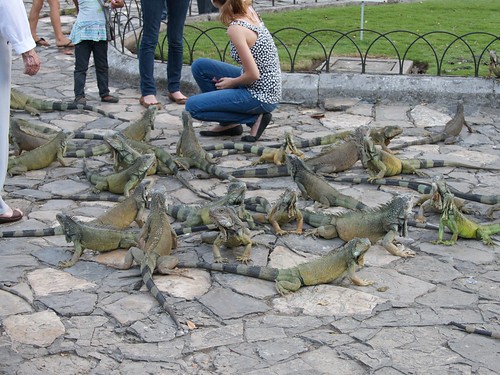 While formally known as Parque Seminario (Seminary Park– again, it’s next to the little cathedral), the park is better known to the locals as Parque de Las Iguanas, or Iguana Park, and the resident population of iguanas is as people-friendly as they come. The iguanas are not kept behind fences or cages; they roam freely and seem to live in the park entirely by choice. (Of course iguanas are native to the region, and the surrounding city streets are a lot less critter-friendly than the park.)
While formally known as Parque Seminario (Seminary Park– again, it’s next to the little cathedral), the park is better known to the locals as Parque de Las Iguanas, or Iguana Park, and the resident population of iguanas is as people-friendly as they come. The iguanas are not kept behind fences or cages; they roam freely and seem to live in the park entirely by choice. (Of course iguanas are native to the region, and the surrounding city streets are a lot less critter-friendly than the park.)
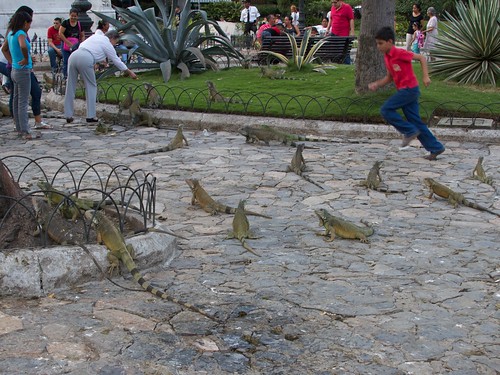
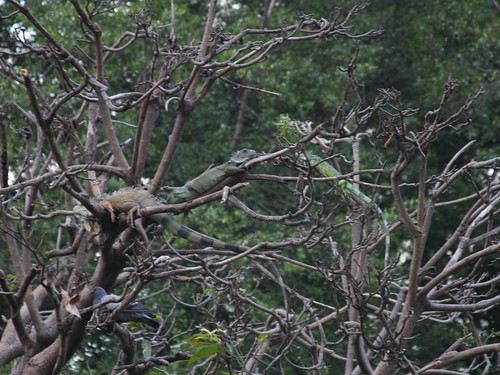
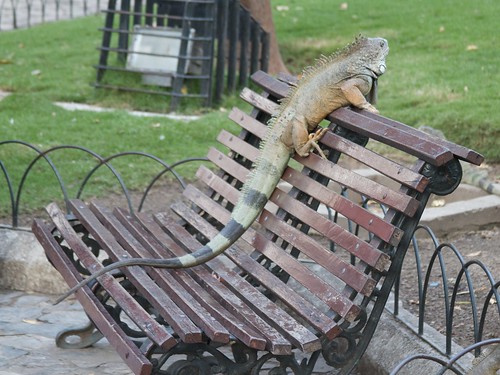
The iguanas hang out on the grass, in the trees (even the tops of the very tall ones), on the benches, and (most of all) in the walkways through the park.
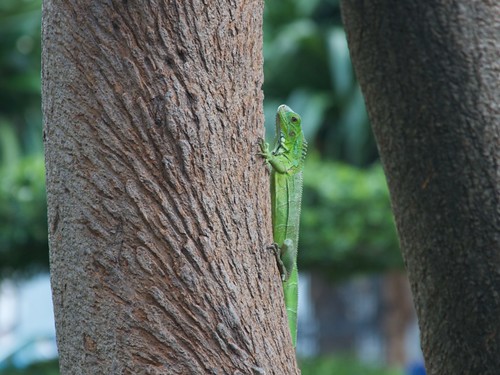
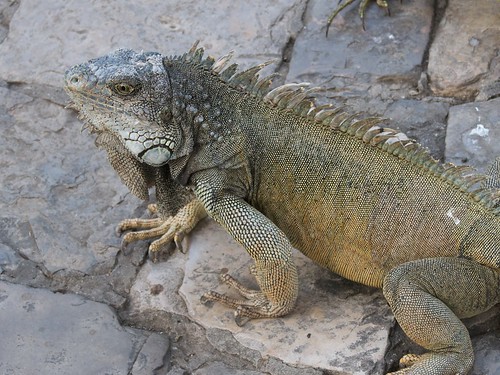 There is a range of different iguana ages in the park. The young ones seemed to be better at hiding, and move a bit more quickly.
In the photo of the older iguana here, you can see something interesting if you look closely at its forehead, just above and behind the eyes: a single lighter colored scale. This is actually what is known as a parietal eye— a “third eye,” but much more primitive than the two used for vision. The parietal eye can sense light and dark above and behind the iguana’s head, so that it’s harder to sneak up on it from behind.
There is a range of different iguana ages in the park. The young ones seemed to be better at hiding, and move a bit more quickly.
In the photo of the older iguana here, you can see something interesting if you look closely at its forehead, just above and behind the eyes: a single lighter colored scale. This is actually what is known as a parietal eye— a “third eye,” but much more primitive than the two used for vision. The parietal eye can sense light and dark above and behind the iguana’s head, so that it’s harder to sneak up on it from behind.
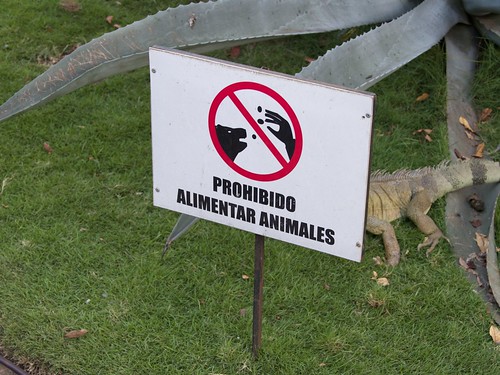 There are quite a few signs around the park telling you not to feed the animals.
There are quite a few signs around the park telling you not to feed the animals.
 Of course, there are more people around the park feeding the animals than there are signs.
Of course, there are more people around the park feeding the animals than there are signs.
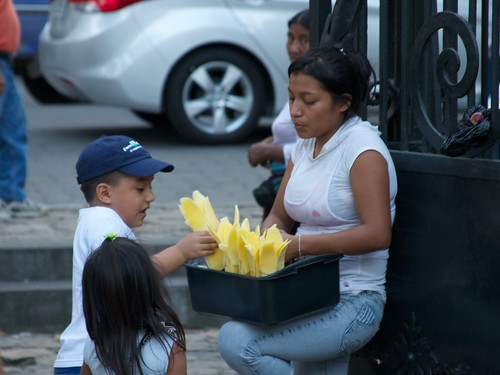 And if you look around, you might notice someone selling pre-sliced strips of mango, just around the corner from the park entrance.
And if you look around, you might notice someone selling pre-sliced strips of mango, just around the corner from the park entrance.
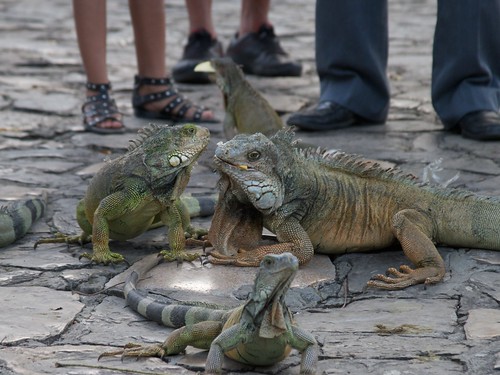 But as far as we can tell, everybody (except the person who requested those signs) actually seems to be doing pretty well here– the kids enjoy feeding the iguanas, the iguanas really enjoy being fed, and the woman with the mango strips seems to be doing fine as well.
But as far as we can tell, everybody (except the person who requested those signs) actually seems to be doing pretty well here– the kids enjoy feeding the iguanas, the iguanas really enjoy being fed, and the woman with the mango strips seems to be doing fine as well.
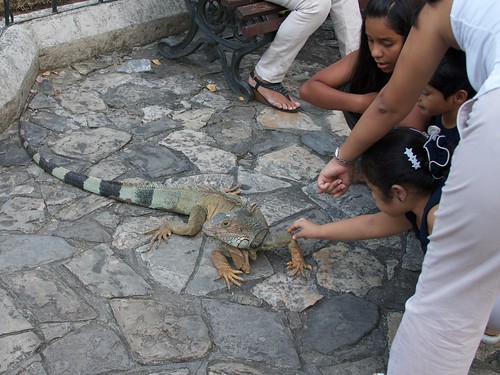 There are also plenty of signs saying not to touch the animals, but these aren’t taken much more seriously. On the bright side, the iguanas have the grassy areas and trees to retreat to, and it seems likely that hanging out with the kids longer is a good way to earn more mango strips.
It’s a good thing that iguanas eat fruits and vegetables, rather than children.
There are also plenty of signs saying not to touch the animals, but these aren’t taken much more seriously. On the bright side, the iguanas have the grassy areas and trees to retreat to, and it seems likely that hanging out with the kids longer is a good way to earn more mango strips.
It’s a good thing that iguanas eat fruits and vegetables, rather than children.




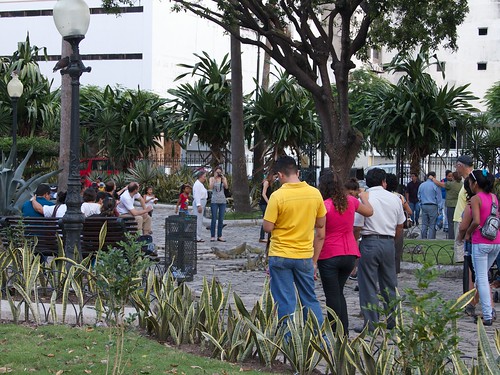
"It’s a good thing that iguanas eat fruits and vegetables, rather than children."
I’ve always thought so.
Once I realized that this article came Evil Mad Scientist Laboratories, the quote seemed much less out-of-place.
The father of a friend of a family friend when I was a kid was a herpetologist, and their home was festooned with iguanas of various ages. Usually hanging from the curtains, although at Christmas they liked the tree even better. The older ones are definitely more self-confident.
It reminds me of the "pigeon square" in Sarajevo. (And probably lots of other cities, as well.)
http://en.wikipedia.org/wiki/Ba%C5%A1%C4%8Dar%C5%A1ija